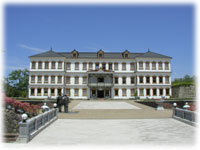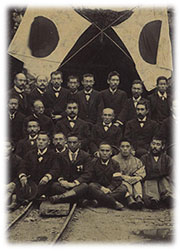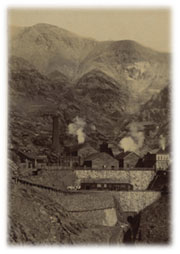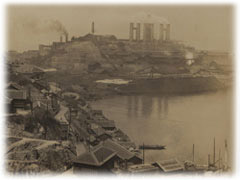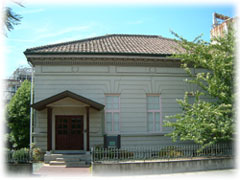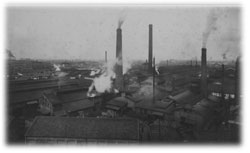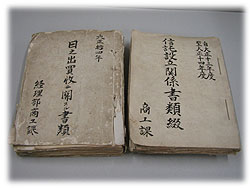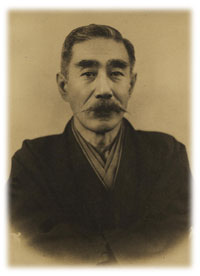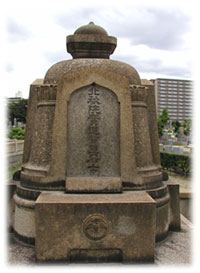Introduction
On October 1, 1925, Kinkichi Nakada, Sumitomo’s fourth director-general, stepped down at the age of 62. Having assumed office on December 5, 1922, he had served for less than three years before his resignation.
Nakada’s subordinate Jun Kawada commented in Sumitomo Memoirs, “Far from being overburdened with work, Nakada spent much of his time playing go and smoking cigars, yet he did accomplish a major reform, namely, the introduction of mandatory retirement for employees at the age of 55 and for directors at the age of 60.” There was previously no mandatory retirement age at Sumitomo. In view of the long tenure in office of Masaya Suzuki, the third director-general, Nakada was not appointed to the top post until he was 59. Deliberately setting a mandatory retirement age younger than his own age, Nakada retired on the very day on which the rule came into force.
Early life
Kinkichi (Tadanao) Nakada was born on December 9, 1864 in Nagakura, Odate-machi, Akita-gun, Dewa-no-kuni (present-day Nagakura, Odate City, Akita Prefecture), the second son of Tarozo (Shigenao) Nakada, a retainer of the Akita Domain, and his wife Bun. The thriving castle town of Odate was controlled by the Satake clan, which exercised lordship over the Akita Domain. Kinkichi grew up in a quarter where the residences of samurai families were concentrated. The Nakada family was prominent in Odate, with Kinkichi’s father Tarozo serving as the third mayor of the town and his brother Naotsuka as the 11th.
In the closing years of the Tokugawa shogunate, the Akita Domain was split between two factions: one siding with the pro-shogunate Ōuetsu Reppan Dōmei (an alliance of the Mutsu, Dewa, and Echigo Domains) and the other consisting of fervent supporters of imperial rule. At the outbreak of the Boshin War in 1868, Yoshitaka Satake, the 12th head of the Satake clan, placed the Akita Domain firmly on the side of those seeking to return power to the imperial court. Thus, surrounded by enemies, Odate was put to the torch during a battle on August 21 and burned to the ground. Kinkichi’s father Tarozo fought on as a loyal retainer of the Akita Domain and the five-year-old Kinkichi, together with his mother and brother, sought a safe haven in the mountains. Kinkichi Nakada, known as an enthusiastic smoker, recalled: “We were told that the government forces would march on Odate, turning it into a battlefield. So my family fled to the nearby mountains, which is where I became an inveterate smoker at the age of five. Ever since, not a day has gone by without me lighting up a cigar.”
Kinkichi’s father Tarozo was known for his unswerving loyalty to his lord. In March 1872, Yoshinao, the 13th head of the Satake clan, was about to move to Tokyo following the abolition of the han system. The lord provided rice to his retainers. Tarozo wanted to be of the greatest possible service to his lord. Consulting with the other 35 retainers in Nagakura, Odate, Tarozo used 49 koku of rice (150 yen), which he received from his lord, as the principal for investment, he made a profit and donated 5,000 yen to Yoshinao. Kinkichi inherited his father’s unswerving loyalty.
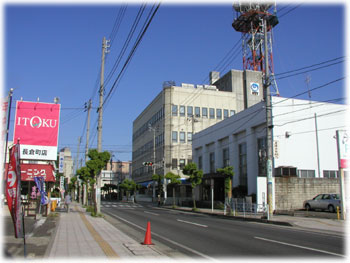
Nagakura was a quarter where samurai residences were concentrated. The house in which he was born was destroyed in a major fire in 1956 and buildings of NTT and Hokuto Bank now occupy the site. The road is National Route 7.
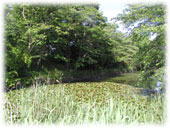
The castle was burnt to the ground during the Boshin War and only parts of the moat and earthworks remain.
Now Katsurajo Park and Odate City Office occupy the site.
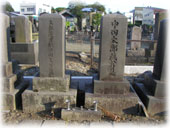
At the cemetery of Sufukuji Temple near where the house in which Kinkichi Nakada was born once stood in Odate.
Mr. Nobunao Nakada, the great-grandson of Tarozo, takes care of the graves.

 EN
EN
